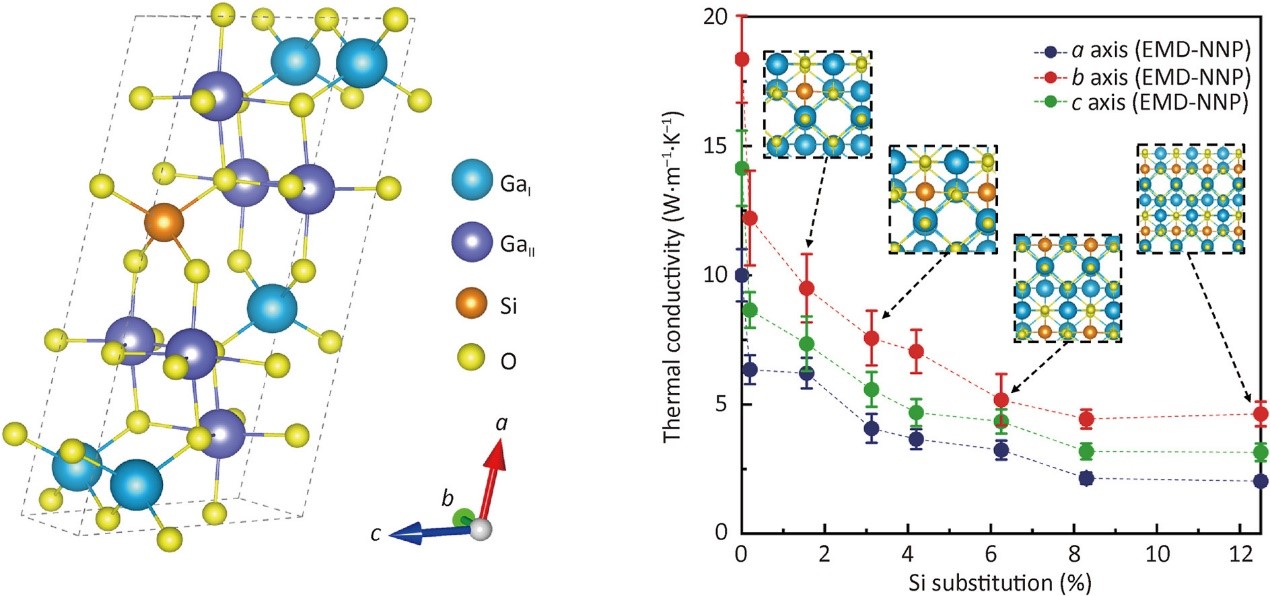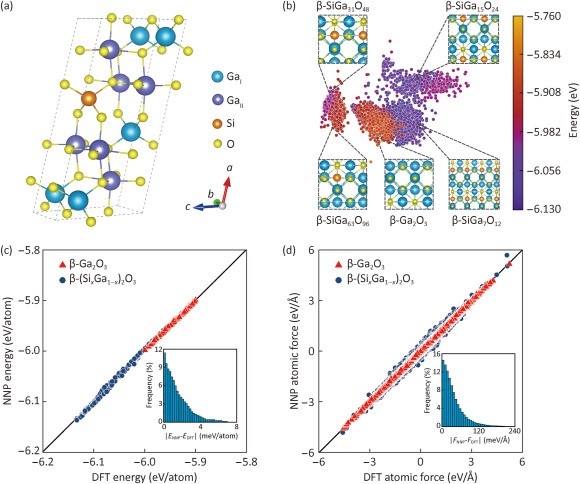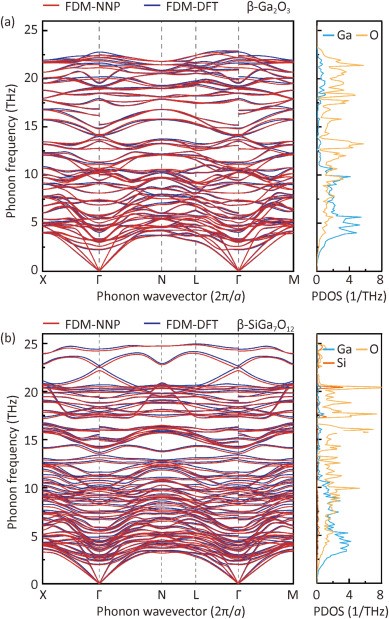
【Domestic Papers】Significant Phonon Localization and Suppressed Transport in Silicon-Doped Gallium Oxide: A Study Using a Unified Neural Network Interatomic Potential
日期:2024-10-18阅读:509
Researchers from the Huazhong University of Science and Technology have published a dissertation titled "Significant phonon localization and suppressed transport in silicon-doped gallium oxide: A study using a unified neural network interatomic potential" in Journal of Materiomics.
Abstract

Monoclinic gallium oxide (β-Ga2O3) is a fourth-generation semiconductor with great application potential in high-power microelectronics. Recent studies indicate that the electrical conductivity of β-Ga₂O₃ can be substantially enhanced through silicon (Si) doping. However, the effects on thermal transport, especially by considering the practical nanostructures within the crystal, have not yet been explored. To address this gap, we have developed a unified neural network potential for investigating the unexplored phonon transport of the β-(SixGa1–x)2O3 with varying doping levels. Our atomistic simulations showed that compared to intrinsic β-Ga2O3, the room-temperature thermal conductivities respectively decreased by 36.5%, 33.5%, and 38.8% along the a, b, and c axes in β-SiGa511O768, and by 79.6%, 74.9%, and 77.8% in β-SiGa7O12. The significant degradation in phonon transport is attributed to increased lattice anharmonicity, reduced sound velocity, and most importantly, induced phonon localization due to Si substitutions. A quantitative analysis reveals that the localization primarily occurs in phonons with frequencies exceeding 2.5 THz. The vibration is confined to a region around the Si atom, extending only to its second-nearest neighbors.

Fig. 1. (a) Crystal structure of the β-SiGa7O12 unit cell, where one GaI atom in β-Ga2O3 has been replaced by Si. Color code: GaI, light blue; GaII, purple; Si, orange; O, yellow. The subscripts “I” and “II” indicate respectively whether the Ga atom is at a tetrahedral or octahedral coordination site. (b) PCA map of the training set for β-(SixGa1–x)2O3 crystals. This set comprises 3013, 100, 502, 499, and 2866 configurations for x-fractions 0.000, 0.016, 0.031, 0.063, and 0.125, respectively, each containing 160 atoms. The color bar represents the energy of the corresponding atomic configurations. Comparison of (c) energy and (d) atomic force computed by NNP and DFT. The red triangles and dark blue circles represent pristine and Si-doped β-Ga2O3, respectively. Probability distributions of the absolute errors are presented in the corresponding insets.

Fig. 2. Phonon dispersion relation and partial PDOS of (a) β-Ga2O3 and (b) β-SiGa7O12 calculated using the FDM-NNP (red curves) and FDM-DFT (blue curves) approaches. The partial PDOS is computed using our NNP, where orange, light blue, and yellow lines represent the contributions of Si, Ga, and O atoms, respectively.
DOI:
https://doi.org/10.1016/j.jmat.2024.06.006


